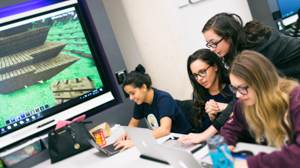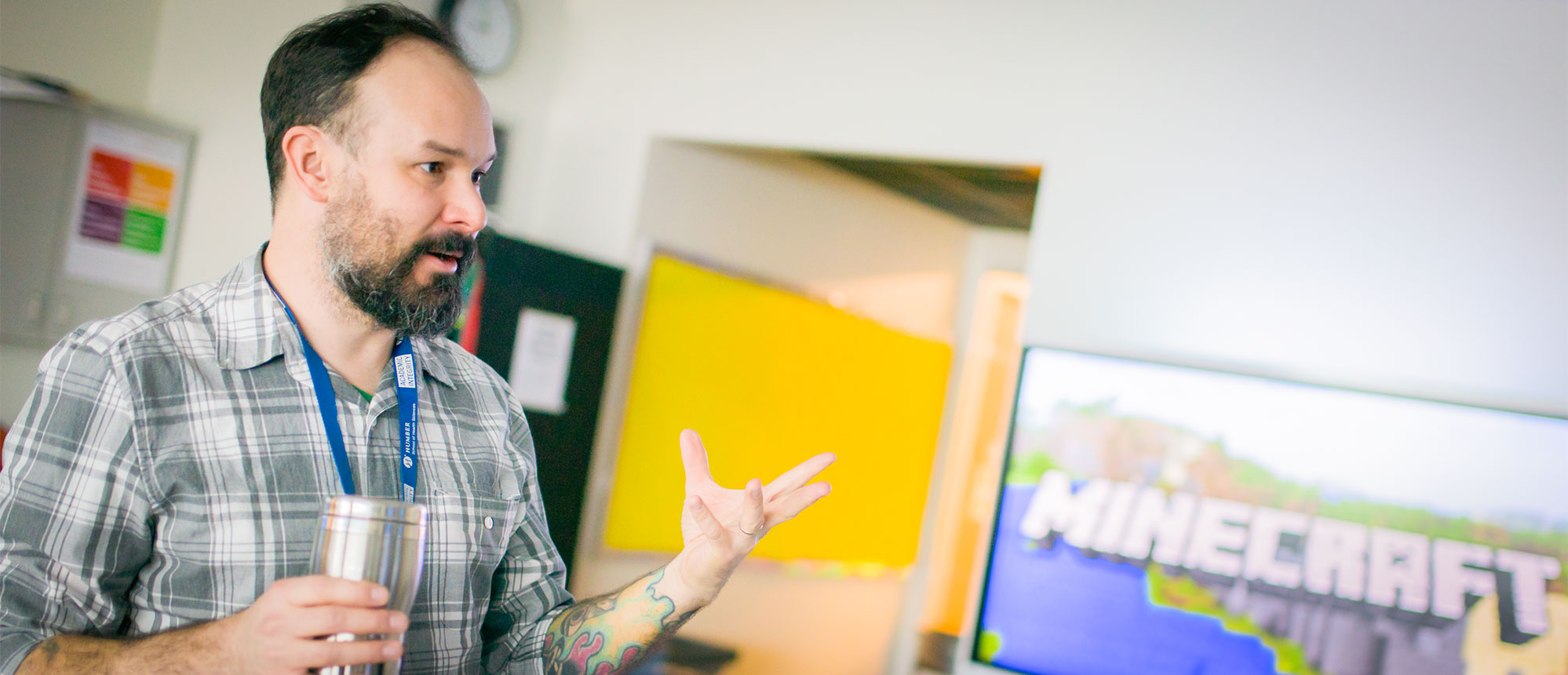

Young gurus of the mega-popular game Minecraft can build almost anything – including their minds. Early Childhood Studies students were treated to a first-hand look at the educational potential of the sandbox video game during a recent class, during which they were assisted by some fresh-faced teaching assistants.
For his Children and Technology class, University of Guelph-Humber instructor Anthony Randell brought his two sons, aged 13 and 10, and a few of their friends in to the classroom as his UofGH students explored the world of Minecraft, most for the first time.
In this case, the children were definitely the teachers. As UofGH students tried to learn the intricate tricks of the game, which allows players to create vast constructions out of 3D cubes, Randell’s team of adolescent assistants circulated through the class, ready at a moment’s notice with troubleshooting for anyone stymied by the game.
“Minecraft is from my experience a big part of their elementary educational experience,” Randell said. “There are some great educational applications for this in the classroom for our students. It’s an opportunity to see the amount of construction and social interaction that’s happening as they play the game.”
Randell’s 13-year-old, Nolan, estimates that he’s been playing for at least five years. He says he never gets sick of the game because its capacity for creativity is limitless.
At one point during the class, he demonstrated how to use the game to make Pixel Art. Projecting his work onto the classroom’s biggest screen, Nolan built a gigantic image of a Pokemon character (Totodile, to be specific). He created his masterpiece one pixel block at a time as UofGH students marvelled.
“It exercises your brain,” Nolan said. “You can stop, take a while and build something really big. Then you’re like: Wow, I finished that. It feels amazing.”
“It really brings out that creative side of them,” his dad agreed. “They’re really active constructing worlds, so it’s really interesting to see how cognitively they understand the environment and then represent it in three dimensions.”
Watching the kids in class also helped Randell illustrate a theory of Early Childhood Studies – “peer scaffolding” – in a practical setting for his UofGH students.
“The older children are helping the younger children learn,” he said. “Usually when we think of technology, it’s very individualistic, but this program is very social for them.”
The students, meanwhile, were impressed by how helpful and technologically savvy the children were. Nolan says it takes most people somewhere between a week and a month to become comfortable with Minecraft, so it’s no surprise the students had to lean on the professionals for help.
“It’s super high-tech – one kid came over and pushed a bunch of buttons, and suddenly we had access to every resource in the game,” said ECS student Meagan Loseto with a laugh. “I could see this building a lot of problem-solving skills.”
Learn more about Early Childhood Studies at the University of Guelph-Humber.

